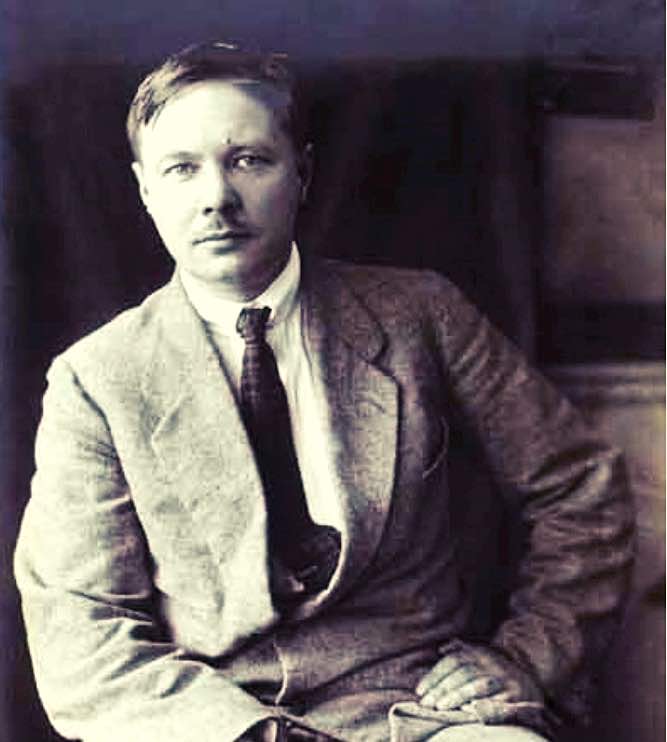 Mikhail Larionov
Mikhail Larionov
( 22.06.1881 - 10.05.1964)
Painter, graphic artist, scene-designer.
Mikhail Larionov was born to family of military medical assistant.
He spent his childhood in the South of Russia. At middle age the artist often visited these places for creating sketches during summer months. In 1898 Larionov entered Moscow School of painting, sculpture and architecture (MUZhVZ), where he studied till 1910 (with intervals because of three expulsions from the School for his artistic freethinking), under the guidance of K. A. Korovin and V. A. Serov. In 1900 Larionov met N. S. Goncharova at the MUZhVZ, who married him later and became co-author for many his works.
Since early 1900s Larionov took active part in art life; he exhibited his works in Russia as well as in Europe.
The artist was under great influence of French painters, that’s why his early period could be called impressionistic.
In 1904 Larionov executed such paintings as Rose Bush, Garden, Fishes at Sunset, which were full of cheerfulness, bright colours and rich pictorial textures. Larionov showed these and other works at the exhibitions of the Society of Russian Watercolorists (ORA), the Union of Russian Artists (SRKh), the group Mir Iskusstva (“World of Art”), at Russian section at the Autumn Salon in 1906 in Paris. The artist’s paintings were a great success.
In 1907–1912 the artist left impressionism and became interested in city folklore pictures; he adopted methods of lubok (Russian folk art), and signboard’s and tray’s painting. He painted in primitive style the series Dandies, Hairdressers (1907) and scenes of provincial life.
In 1910 Larionov joined the group Bubnovy Valet (“Jack of Diamonds”); at the exhibition of this group the artist showed his painting Bread resembling signboard of a bakery. Even drawings and inscriptions on the fence were a constant inspiration for Larionov’s primitivism.
The painter collaborated with poets-futurists; he illustrated theirs publications (in particular Lipstick by Aleksei Kruchenykh in 1912), executed a series of lithographic cards after his paintings; he was also engaged in graphic art. These cards and books were published in limited edition; nowadays they are of great value.
Larionov left Bubnovy Valet and organized the exhibition Osliniy Khvost (“Donkey’s Tail”) in 1912 where he showed his works from so called soldier’s series which he painted after his service in the army in 1910, in particular A Resting Soldier (1911); he also organized the exhibition Mishen (“Target”; 1913). In 1913 Larionov together with I. M. Zdanevich and M. V. Le-Dantyu organized extravagant futuristic walks through Moscow which became the first happenings; the artist together with Zdanevich published the manifest Why we are colouring.
At the exhibitions of the group Mishen (“Target”), Larionov showed several works from unfinished cycle Venus and four paintings Seasons (1912), which were subjected to criticism as the artist’s defiance. The painter used the language of children’s drawing and archaic symbolism, provided with unpretentious text. Mishen became the peak of development of Larionov’s artistic ideas.
In 1913, at the debates of the group Mishen titled The East, Nationality and the West, Larionov declared about his eastern orientation and made a report about Rayonism — new concept of abstract art, where forms were created by crossing of the rays reflected from different objects.
In the same year Larionov published the booklet Rayonism, the manifest Rayonists and Futurists including formulation the theory of new movement.
At the exhibition of the Mishen and at further exhibitions, the painter showed his rayonistic works, such as Cock and Hen; Rayonistic Mackerel and Sausage; 14. Futurists, Rayonists, Primitive (all — 1914); The Year of 1915 and others.
In 1914 Larionov was mobilized to the First World War, was contused and later was given discharge from military service because of the wound.
In 1915 Sergey Dyagilev invited the artist to participate in his theatrical enterprise, and Larionov together with his wife moved to Paris.
Larionov joined the troupe of the Russian Ballet, and designed several productions, in particular Russian Fairy Tales on the music by A. K. Lyadov (1916), The Tale of the Buffoon by S. S. Prokofiev (1921), The Fable of the Vixen, the Cock, the Cat and the Ram by I. F. Stravinsky (1922) and others. In 1920s Larionov became Dyagilev’s art consultant, who under Larionov’s influence invited modernist artists for collaboration.
In that period Larionov returned to his early figurative manner of painting, to chamber genre and still life.
The artist was engaged in graphic arts, participated in the exhibitions, he also began to collect works of art. In the last period of life, Larionov devoted a lot of time to writing, in particular he wrote memoirs and articles on Russian art.
According to the testament of A. K. Tomilina (the second wife of the artist), the considerable part of Larionov’s artistic legacy was handed down to the State Tretyakov Gallery in 1988; at present most of the artist’s works is kept there. Works by Mikhail Larionov are also in the State Russian Museum in St. Petersburg and other museum and private collections in Russia and abroad.
Mikhail Larionov's work has been offered at auction multiple times, with realized prices ranging from $150 USD to $3,140,317 USD, depending on the size and medium of the artwork. The current record price for this artist at auction is $3,140,317 USD for "KNEADING DOUGH", sold at Sotheby's London in 2014. Mikhail Larionov has been featured in articles for "ArtDaily", "ARTINFO" and "Financial Times". The most recent article is "Mysterious, Radical Russian Avant-Garde Legends Natalia Goncharova and Mikhail Larionov Rise Again" written by Natasha Gural for Forbes in January 2019.